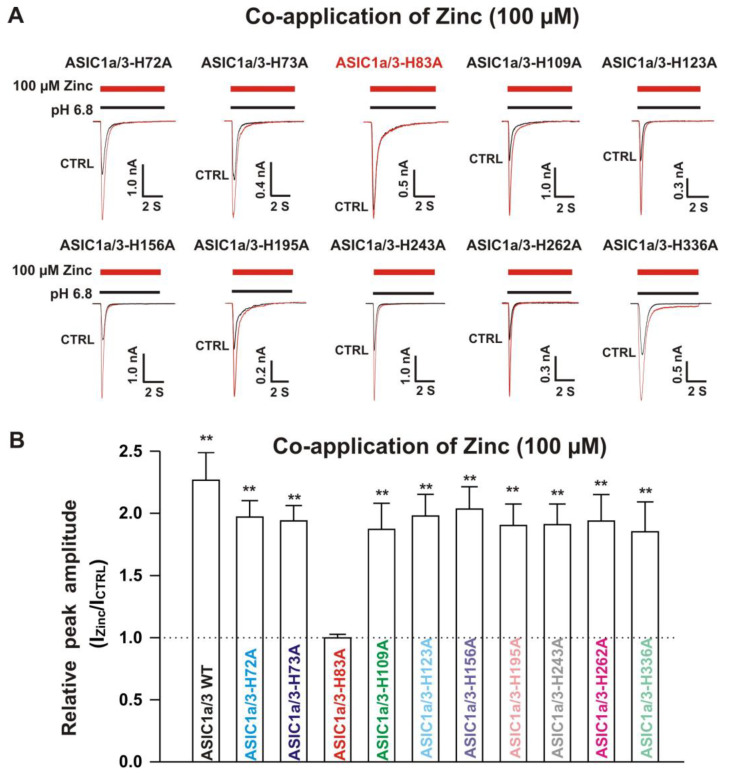Figure 12.
Effects by co-application of zinc on currents from ASIC1a WT co-expressed with ASIC3 histidine mutants on CHO cells. (A) Representative traces show that co-application of zinc at a concentration of 100 µM potentiated the peak amplitude of the currents recorded from heteromeric ASIC1a/3-H72A, ASIC1a/3-H73A, ASIC1a/3-H109A, ASIC1a/3-H123A, ASIC1a/3-H156A, ASIC1a/3-H195A, ASIC1a/3-H243A, ASIC1a/3-H262A, and ASIC1a/3-H336A, but not ASIC1a/3-H83A; (B) Statistical bar graphs show relative peak amplitude of the currents from ASIC1a/3 WTs and its histidine mutant co-expressed with ASIC3 WT as mentioned above by co-application of 100 µM zinc (n = 7 to 15). Co-application of 100 µM zinc did not affect the current without zinc application on ASIC1a/3-H83A (p > 0.05, t-test). There was no significant difference for zinc potentiation among ASIC1a/3 WTs with ASIC1a WT co-expressed with ASIC3 histidine mutants except ASIC1a/3-H83A (p > 0.05, ANOVA). For ASIC3 mutation, histidine residues in the extracellular domain of ASIC3 were replaced with alanine. Whole-cell patch-clap recording was performed, and currents recorded from heteromeric ASIC1a/3 WTs and ASIC1a WT with ASIC3 histidine mutants were triggered by a drop in pH from 7.4 to 6.8. Data are presented as mean ± SEM. CTRL, control; ICTRL, ASIC current without any treatment; IZinc, ASIC current by zinc treatment. ** p < 0.01 (t-test).

